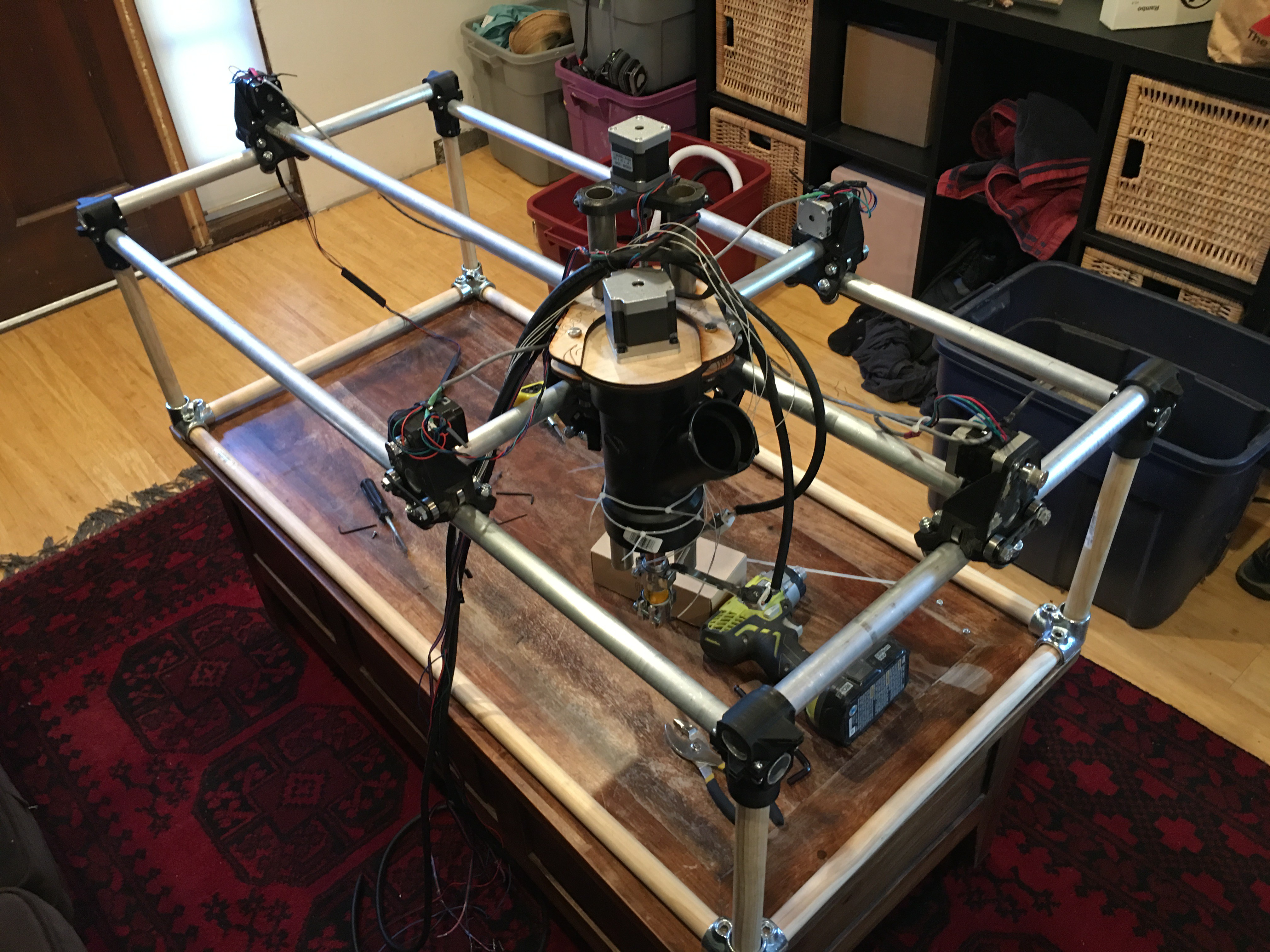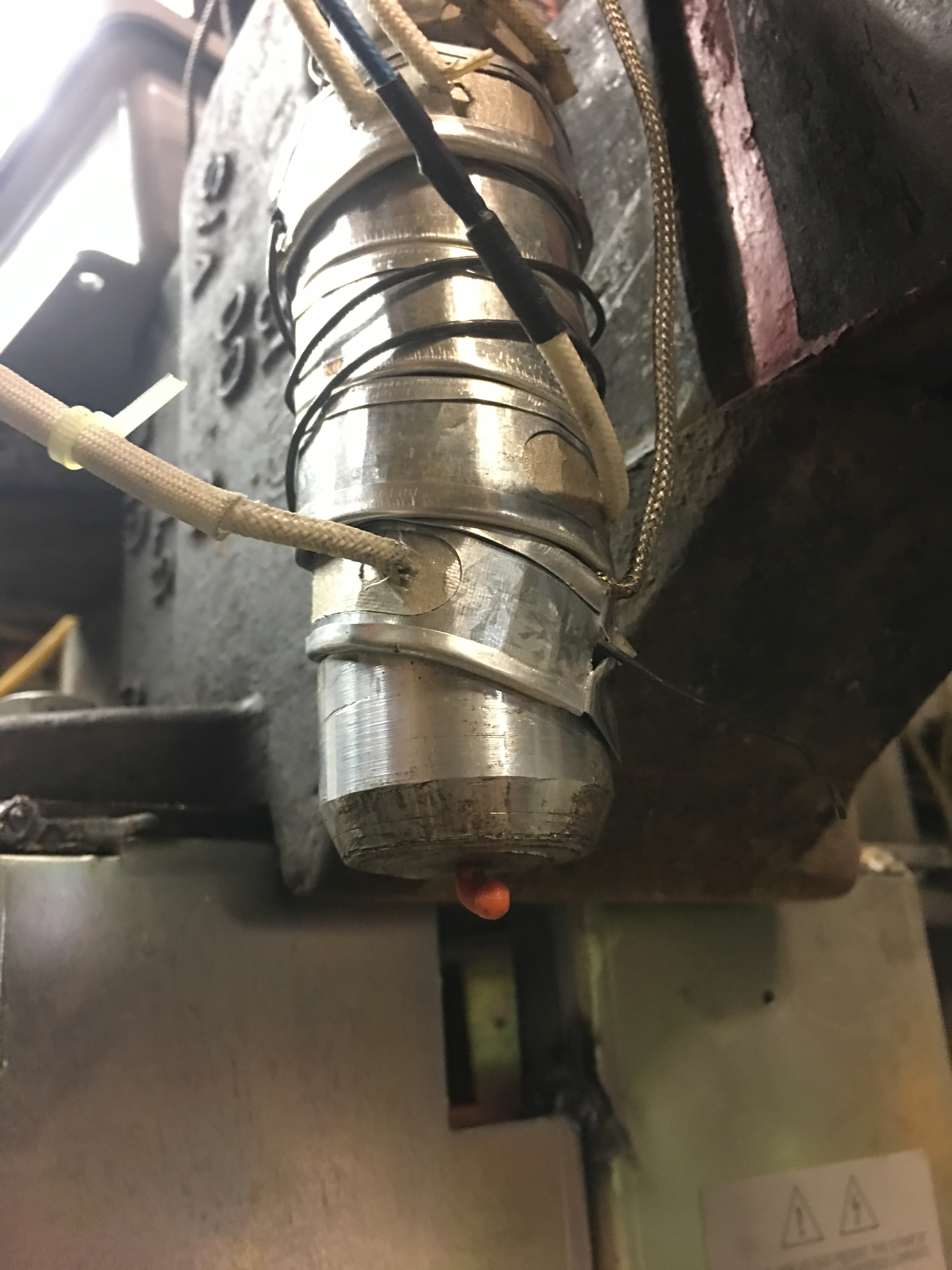 So far I've been able to turn trash into energy, and I've been able use that energy to shred trash- including plastics. Most plastics in the waste stream are recycleable, and although you could burn them for energy, it's a waste of a precious and useful meta-material, and since plastics are made from fossil fuels, it still adds net carbon to the air, unlike burning cardboard or woodchips, which there is no shortage of. So it makes sense to build the plastics that are clean and recyclable into new stuff. My ultimate goal would be a machine that can fabricate as many of it's own parts as possible, using trash as the raw material, which would then make it capable of not only metabolism, but also adaptation, growth, and self-replication... further blurring the lines between technology and ecology.
So far I've been able to turn trash into energy, and I've been able use that energy to shred trash- including plastics. Most plastics in the waste stream are recycleable, and although you could burn them for energy, it's a waste of a precious and useful meta-material, and since plastics are made from fossil fuels, it still adds net carbon to the air, unlike burning cardboard or woodchips, which there is no shortage of. So it makes sense to build the plastics that are clean and recyclable into new stuff. My ultimate goal would be a machine that can fabricate as many of it's own parts as possible, using trash as the raw material, which would then make it capable of not only metabolism, but also adaptation, growth, and self-replication... further blurring the lines between technology and ecology.I'm looking into a few ways of doing that, and one of these is attempting to a create large format, low-resolution 3D printer head that skips the filament-making step. People always ask me if you can make 3D printer filament out of recycled plastic, and intuitively that makes sense, and the answer is yes, you CAN... But since recycled plastic almost always has various impurities in it, and you would be using a DIY machine that you have to build yourself, and because filament needs be the exact same diameter, +/- a few microns, over a span of hundreds of feet, it's actually a really difficult to turn waste plastics into a high-quality enough filament to print with in a typical desktop 3D printer without a lot of headaches, and it's often just not worth the trouble given the cost and availability of commercial filament spools (you can buy recycled PET filament from various vendors, but that's not the same as being able to make your own). In addition to that, the common recyclable plastics you could use for printing- primarily Polyethylene, Polypropylene, and PET (Polyethylene Terephthalate), while all technically 3D printable, all have properties that make them less-than-ideal when compared to PLA or ABS for desktop printing. PP and PE have relatively high warping/cooling issues which can lead to bad prints, and while PET prints well, it absorbs water from the air, so all recycled PET has to be dried and stored properly before it can be printed, adding an extra step and complication. So while all of the materials are printable, there is a very real reason 3D printing of recycled plastics is not more common.

So I've been trying to design an extruder, based on the precious plastic extruder, which uses a wood auger to move recycled plastic flakes into a heated barrel and out a small nozzle, but placed on a vertical axis and designed so it can be easily mounted on a CNC gantry, so it can for large-format, low resolution printing directly from recycled plastic flakes. Above is my current version, which is my 4th iteration. My original design used a NEMA34 stepper motor, which worked but was crazy overkill. This one uses a 4:1 planetary geared NEMA23 stepper for extrusion, and 2x 300W heater bands. Thats way more power than you need, but the heaters were cheap on Amazon, and where the right diameter.


So I started looking for a cheap, open source, easy-to-modify CNC gantry, and I found the MPCNC, which stands for Mostly Printed CNC. The MPCNC is open-source, fairly well documented, cheap to build, and uses standard hardware, readily available tubing or conduit as rails, and 3D printable parts, all of which fit well into my design criteria of being "disruptively replicable". So for several months I've been working on building the gantry, and yesterday I got it moving for the first time! Now I'm in the troubleshooting phase. Currently the motors are wired wrong (parallel rather than series) and they sometimes don't have enough current to move the gantry. I'm hoping to re-do the wiring soon and see if that helps. It's always something!
But I'm excited about the MPCNC as part of the metabolizer, because it can do both additive 3D printing, and subtractive 3D or 2D milling/routing. So if I can get recycled plastic into block or sheet form, I could machine it instead of printing it, which should make for stronger parts. Each process has its limitations of course, and I'm just getting started, but it's definitely possible, and that's what keeps me going.
 Sam Smith
Sam Smith
Discussions
Become a Hackaday.io Member
Create an account to leave a comment. Already have an account? Log In.